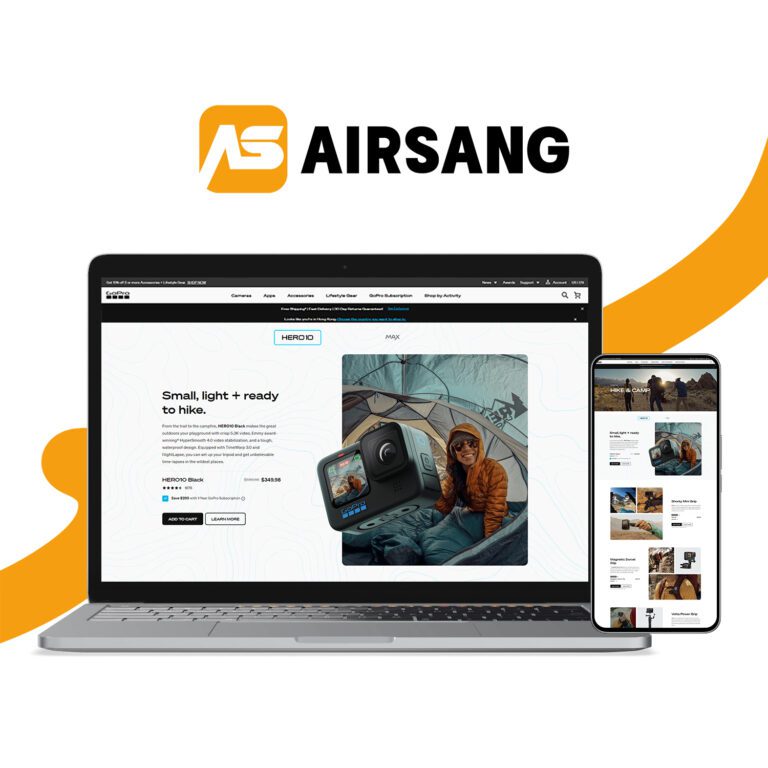Shopify vs WordPress: Which Platform Is Best for Your Business?
In the digital commerce space, selecting the right website platform can define how effectively you scale, sell, and manage your brand online. At Airsang Design, we help entrepreneurs and companies navigate this critical choice—most commonly between Shopify vs WordPress. Both platforms offer powerful tools, but they serve different needs, business models, and user experiences.
This guide will walk you through a side-by-side comparison so you can confidently choose the best fit for your eCommerce or content-driven goals.

Understanding the Core Purpose of Each Platform
What Shopify Was Built For
Shopify is an all-in-one, hosted eCommerce platform. Designed specifically for online selling, it offers a streamlined interface that makes launching a digital store fast and relatively hassle-free.
Key Shopify Strengths
- Seamless product and inventory management
- Built-in payment processing (Shopify Payments, Stripe, PayPal)
- Secure and fast checkout
- App integrations for upsells, email marketing, and fulfillment
- Hosting and SSL included
Who Benefits Most?
Businesses that want a plug-and-play storefront with minimal backend management will thrive on Shopify. Product-focused entrepreneurs, dropshippers, and retailers prefer its simplicity and strong support ecosystem.
What WordPress Was Built For
WordPress, specifically with WooCommerce, is an open-source CMS (Content Management System). It offers unparalleled flexibility for content and eCommerce, but more effort is required for setup and maintenance.
Key WordPress Strengths
- Fully customizable themes and plugins
- Ownership of code and content
- Ideal for content marketing and SEO-driven growth
- Extensive plugin marketplace
- Lower hosting costs with flexible control
Who Benefits Most?
Many businesses choose WordPress for advanced content features, multilingual support, and flexible design—ideal for blogs and hybrid sites.

Comparing Features: Shopify vs WordPress
Setup and Ease of Use
Shopify offers a guided onboarding process. Themes can be installed and edited without coding. The dashboard is clean and designed for store owners.
WordPress requires domain registration, hosting setup, theme selection, and plugin installation. Beginners often need developer assistance, especially when integrating WooCommerce.
Verdict
Shopify wins for simplicity. WordPress wins for customization.
Design and Customization
Both platforms offer free and premium themes. However, the level of control differs.
Shopify themes can be edited, but advanced customizations may require working with Liquid code (Shopify’s templating language).
WordPress allows full control over site design using page builders like Elementor or Gutenberg and full access to the theme’s PHP and CSS files.
Verdict
WordPress takes the lead in creative control and long-term scalability.
Performance and Hosting
Shopify handles hosting, performance optimization, CDN integration, and updates for you. The platform is reliable, fast, and secure.
WordPress requires external hosting. Site speed depends on your hosting provider and configuration. More control = more responsibility.
Hosting Cost Comparison
- Shopify Basic Plan: ~$39/month (includes hosting + SSL)
- WordPress: ~$10–25/month (hosting) + optional plugin/theme costs
Verdict
Shopify is easier to manage. WordPress can be faster—but only with effort and optimization.
SEO and Content Marketing
Developers originally designed WordPress as a blogging platform. It dominates in SEO, content formatting, and metadata control. Plugins like Yoast SEO or RankMath give businesses deep optimization capabilities.
Shopify supports basic SEO features (URLs, titles, descriptions), but is more limited. Blog features are present, but not as powerful or flexible.
Verdict
For long-term content marketing and SEO dominance, WordPress is the clear winner.

Maintenance and Support
Which Platform Requires More Ongoing Care?
Shopify handles updates, security patches, and backups. Support is available 24/7 via chat, email, and phone.
WordPress requires manual updates of themes, plugins, and core files. You must install and configure security and backup solutions (e.g., Wordfence, UpdraftPlus).
Verdict
Shopify offers hands-off maintenance. WordPress demands more attention but offers greater independence.
Conclusion: Which Should You Choose?
Choosing Shopify vs WordPress depends on your business needs, technical comfort, and long-term vision.
At Airsang Design, we build both Shopify and WordPress websites—based on what best aligns with your goals. If speed, security, and eCommerce simplicity matter most, Shopify may be your answer. If branding, SEO, and content strategy drive your growth, WordPress delivers unmatched flexibility.
Not sure which is right for you? Let Airsang Design guide your platform decision, build your store, and elevate your digital strategy with confidence.
















